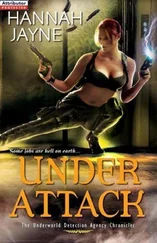Plans for eight huge shelters, each holding 8,000 people and most constructed beneath existing tube stations, were approved in October 1940. But the first of three purpose-built deep shelters available to the public (others were used for telecommunications and similar facilities), in Stockwell in south London, was not opened until 10 July 1944 – more than three years after the end of the blitz. One hundred and thirty feet underground, it could accommodate 4,000 people and was equipped with canteens, lavatories and washing facilities, and even arrangements for laundry. By that time Haldane, who had usually taken shelter in a deep trench on Primrose Hill, near where he lived with his journalist wife Charlotte, and after that had been hit, in a shelter below London Zoo at the invitation of his friend Julian Huxley, the Secretary of the Zoological Society, had removed with his laboratory to Harpenden in Hertfordshire.
Even though the government had been resistant to sanction deep shelters, it was a visceral human instinct to seek refuge underground when attacked from above, and that is what many of Britain’s urban population sought to do. As well as basements – Anthony Heap and his mother spent the blitz moving from basement to basement near where they lived in Bloomsbury, ending up most nights in the cavernous cellars of the Quaker Friends’ Meeting House in the Euston Road – the crypts of churches were popular. At St Peter’s church in Walworth in south London, the Reverend J.G. Markham found that his crypt, which had been designated as a public shelter for 230 people, usually housed at least double that number, with shelterers
lying like sardines on a variety of beds, mattresses, blankets or old carpets which they brought down with them. Some sat on deckchairs, some lay on the narrow wooden benches provided by the borough. The stench from the overflowing Elsan closets and unwashed humanity was so great that we had to buy gallons of Pine Fluid … the shelter wardens had a whip round among their flock to buy electric fans which did stir the foetid air a trifle, giving an illusion of freshness … You can get used to those sort of conditions if you stay in them 12 hours a night, night after night. At least one family stayed there almost 24 hours rather than go home and risk losing their place. Places were as precious, to the regulars, as seats in some theatres, so that queues formed outside hours before the sirens wailed, and I had to provide wardens to regulate the flow of would-be shelterers, some of whom came from some distance, even by taxi.
Lambeth Palace’s crypt could accommodate 250 people, and being so close to the Thames and across the road from the thrice-hit St Thomas’s Hospital, it was popular with the local community. But not with the Archbishop himself, his chaplain the Reverend Alan Don reported. During the September raids ‘sleep was, for most people, out of the question – and even CC [Cosmo Cantuar] descended into the basement for a while. He avoids the crypt – the people there frighten him more than the bombs!’
The Canadian photographer Bill Brandt, who had settled in Britain in 1932 and had established a reputation as a sensitive photo-journalist of English life and mores, was commissioned by the Ministry of Information to photograph London’s underground shelters. He spent the week of 4–12 November 1940 capturing the ‘drama and strangeness of shelter life’ until he caught influenza and had to abandon the project. The most compelling – and also the strangest – of the photographs he took are of people sheltering in the crypt of Christ Church, Spitalfields. Some show people sleeping in stone sarcophagi, while a bewildered-looking Sikh couple and their child huddle in a damp alcove. Ritchie Calder visited the same crypt, taken by the Shelter Marshal ‘Mickey the Midget’, in civilian life an optician, and he too was struck by the sarcophagi: ‘massive stone vaults. In them the bodies of the centuries-old dead had mouldered away. Now their heavy stone lids had been levered off. The bones and dust had been scooped out. The last resting-place of the dead had been claimed by the living.’ Others, unable to lever off the lids, lay stretched out on top of the tombs, while more lay in the aisles. There were ‘rows of old men and old women sitting bolt upright in paralytic discomfort on narrow benches. Some had “foot muffs” made out of swathes of old newspapers or were hugging hot-water bottles, their heads lolling in sleep. The vaults were bitterly cold. A draught full of menace blew through them – menace because it came from half-submerged windows, not blocked up, just blacked out.’
In the inner vaults, ‘stretched on the rough floor was a tall figure of an ex-Bengal Lancer, his magnificent shovel beard draped over a blanket, his head turbaned and looking, in sleep, like a breathing monument to an ancient Crusader … Life in this crypt, as in dozens of other crypts … in the early days of the “blitz” was worse than primitive. It made the conditions described by Dickens seem like a comedy of manners by Thackeray. The Fleet Prison and the Marshalsea were polite hostelries compared with conditions which existed when the “blitzkrieg” first hit London and drove most [sic] people underground.’
Not all underground people suffered the same discomforts and indignities. Brandt’s photographs show a couple coyly snuggling under an eiderdown in the basement of a department store – most West End stores had cleared out their basements to accommodate sleepers. The Savoy Hotel had a commodious basement, though this was often closed when water threatened to flood in if bombs fell on the Thames, which flowed past. On 14 September 1940 a Communist councillor (and later MP) for Stepney and ARP warden, Phil Piratin, who had been active in converting pre-war East End tenants’ associations into Shelter Committees to keep up the battle for deep shelters, and to press for better facilities in public surface and tube shelters, led a party of seventy of the borough’s residents to the Savoy to demand access to its shelter. ‘We decided what was good enough for the Savoy Hotel parasites was reasonably good enough for Stepney workers and their families. We had an idea that the hotel management would not see eye to eye with this, so we organised an “invasion” without their consent. In fact there was no effort to stop us, but it was only a matter of seconds before we were downstairs, and the women and children came streaming in afterwards. While the management and their lackeys were filled with consternation, the visitors from the East End looked round in amazement. “Shelters?” they said. “Why, we’d love to live in such places.” ‘
The recently built Dorchester was considered all but bomb-proof with its reinforced concrete structure, but it turned its basement first into Turkish baths and then its basement gymnasium into an air-raid shelter, a ‘funk hole’ in which the beauteous Lady Diana, wife of Duff Cooper, who had resigned as First Lord of the Admiralty at the time of the Munich crisis, felt ‘quite secure’ as she lay ‘hugger mugger with all that was most distinguished in London society’. ‘No one snores. If Papa makes a sound I’m up in a flash to rearrange his position. Perhaps Lady Halifax is doing the same to his Lordship [the Foreign Secretary] … They each have a flashlight to find their slippers with, and I see their monstrous forms projected caricaturishly on the ceiling, magic lantern style. Lord Halifax is unmistakable. We never actually meet,’ she wrote to her son, John Julius Norwich, evacuated to safety in Canada.
Should a person wish to dance and dine at the Hungaria restaurant in Lower Regent Street, they could book a shelter place in the cellar for the night as well as a table. If the raid lasted all night, breakfast would be served in the morning.
Читать дальше












